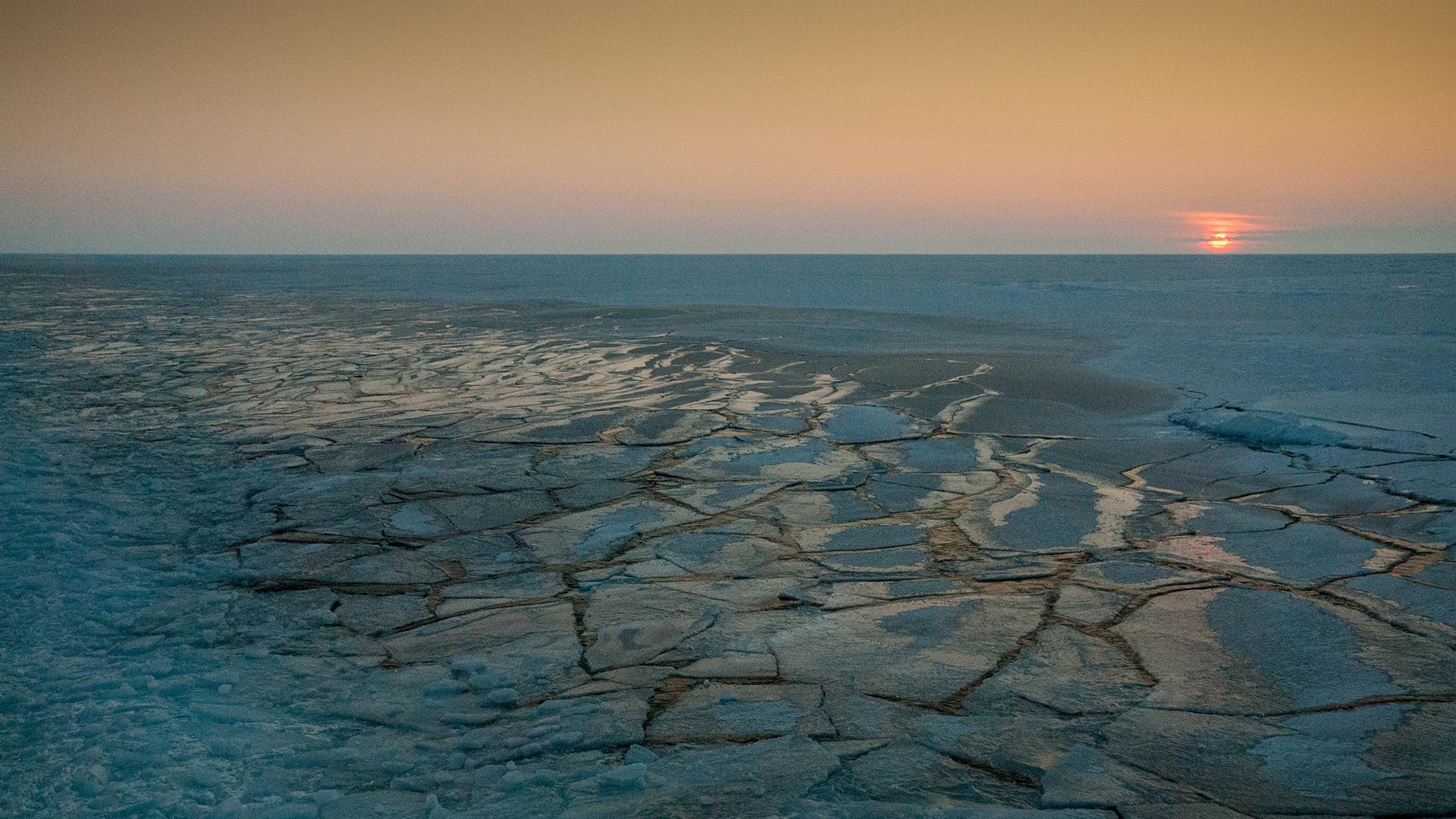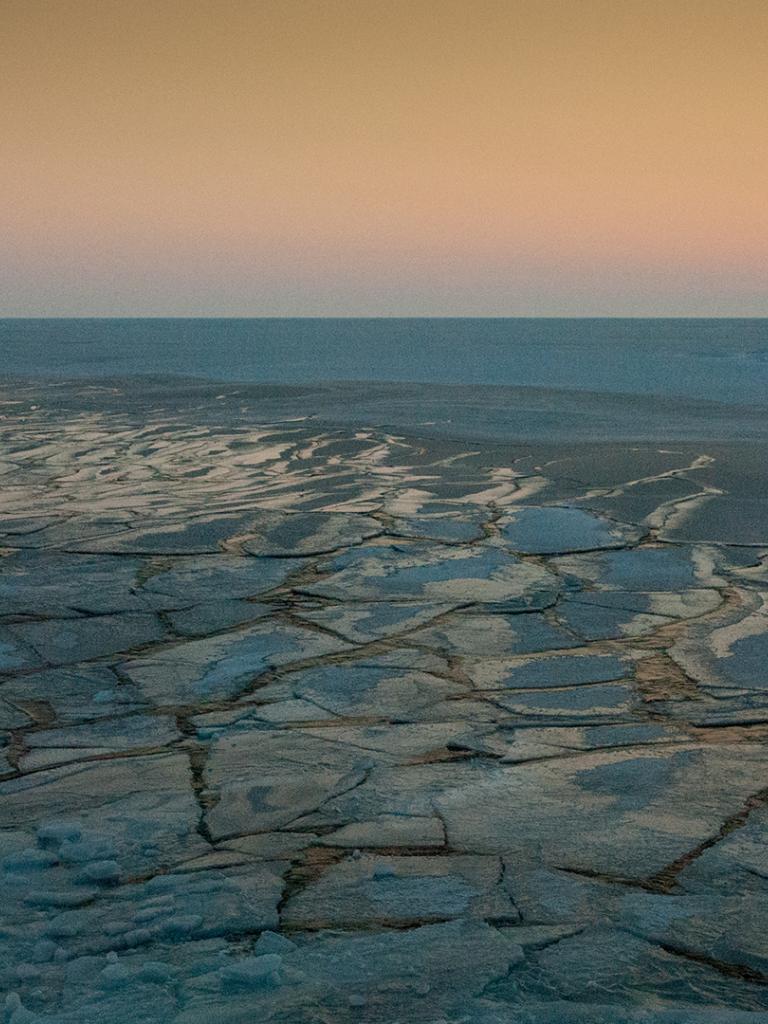
Talking point: The Arctic sea ice maximum – feeling the heat
Arctic Ocean sea ice reached its annual maximal extent on 7 March 2022. Dr Rasmus Tonboe helps us make sense of some of the talking points


Talking point
Talking point is a new series of articles aimed at making sense of the stories behind the data.
Preliminary analysis of satellite data suggests that Arctic sea ice reached its annual maximal extent on 7 March 2022. Dr Rasmus Tonboe, a Sea Ice Researcher at the Danish Meteorological Institute (DMI), helps us make sense of some of the talking points
OSI SAF is a EUMETSAT centre of excellence dedicated to processing of satellite data and coordinating research, development, and operational activities related to the ocean-atmosphere interface.
OSI SAF delivers a range of products including information relating to global sea ice concentrations, ice edge, ice type, and a sea ice index that covers both extent and area during the past four decades.
Satellite instruments track the growth and melting of sea ice. This allows scientists to pinpoint when the ice hits its maximum and minimum extents and to record the size. Instruments can also support studies of other important sea ice characteristics such as thickness and movement.
Dr Rasmus Tonboe, a Sea Ice Researcher at the Technical University of Denmark, helps us make sense of some of the talking points.
Arctic sea ice decline is not uniform across the year
“Temperatures in the Arctic are increasing at more than twice the global average," explains Dr Tonboe.
“This has led to a steady decline in sea ice extent, raising the worrying prospect of ‘ice-free’ summers in the coming decades, when ice coverage in the Arctic would fall below a million square kilometres.
“At the North Pole in the summer the sun is always above the horizon. Sea ice reflects solar radiation, returning around four-fifths of the energy back into space.
“When ice melts due to warming temperatures, the albedo — the ability of a surface to reflect light — of an area is reduced because dark ocean waters absorb more heat than sea ice.
"This in turn amplifies the effects of global heating in the summer and further accelerates ice melting.
“Winters in the Arctic are very dark, so the albedo effect is less pronounced. There are also other feedback loops at play.
“For example, warmer air can contain more water vapour. Because water vapour is a greenhouse gas this can create a positive feedback loop that creates further warming.
“Another factor that influences Arctic warming results from the ‘lapse-rate’ feedback loop. Unlike in tropical areas, which experience a lot of convection that can dissipate some of the warming effects, the Arctic’s atmosphere is very stable. This suppresses vertical mixing of air and warming remains predominantly in a thin layer near the ocean’s surface.
“Nevertheless we are still seeing alarming declines in the average extent of sea ice in the winter as well.
"The open water season in regions covered part of the year by sea ice has increased by up to three months since the 1980s. Ice freezes later and breaks up earlier because it doesn’t have as much time to grow.
"Winter temperatures have also been rapidly increasing.
“Since 2013, the average monthly March extent has consistently been under 15 million square kilometres. For shorter periods during the month it has gone above 15, but this year the daily extent has stayed below 15. In the 1980s the majority of the mean March extents were above 16 million square kilometres.
"Natural variability causes smaller fluctuations from year to year. But the alarming decline we are seeing in long-term records is due to imbalances caused by human-driven climate change."
"It is the excess or deficit of energy at different times of the year that is a main driver of the annual sea ice cycle.”
Satellites support sea ice measurements from many angles
“At its maximum extent, Arctic sea ice spans an area around one and half times the size of Europe," says Dr Tonboe. “Sea ice has a very strong seasonality. It can take on a variety of textures, and much of the ice is covered with snow – all adding to the complexities of characterising the ice below.

“To characterise sea ice and its interactions with the Earth’s atmosphere, it is therefore necessary to have continuous observations.
"Since the 1970s, polar orbiting satellites have helped build a more detailed picture of sea ice cover by providing measurements of ice extent on a daily basis throughout the year.
“Radiometers, for instance, measure thermal microwave radiation emitted from the Earth’s surface. The different wavelengths recorded allow meteorologists to distinguish sea ice from water, even under cloud cover and in the dark.
“It's not just the ice extent we are interested in, but its thickness, age, and movement. Altimeter instruments that employ laser or radar technologies can be used to estimate ice thickness.
“There are still challenges to overcome. Radiometers can be affected by rain and snow, while altimeters can struggle when faced with clouds, snow cover or melting on the surface of sea ice.
"Therefore, to build up long time-series datasets it is important to combine measurements from a wide range of different missions, including those carried out using ships, submarines, buoys, aeroplanes, and satellites.
“EUMETSAT’s next generation polar orbiting satellites Metop Second Generation will soon take the baton for monitoring sea ice from space. This will ensure a continuation of meteorological observations from polar orbit for the next two decades."
It is not too late to act, but time is short
“Unlike the more complex picture we see in the Antarctic, losses in the Arctic sea ice extent are strongly correlated with increasing global temperatures throughout the year,” Dr Tonboe says.
“Some studies suggest that the pace of decline of the Arctic sea ice and increase in greenhouse gas emissions have a fairly linear relationship.
“This would mean that if we can radically curb emissions, it could still be possible to push back the date when we will see ‘ice-free’ summers, where the vast majority of ice cover has melted away.
“Losing the ice would result in devastating consequences for people and animals. But it’s not too late if we act now.”

Author:
Adam Gristwood
